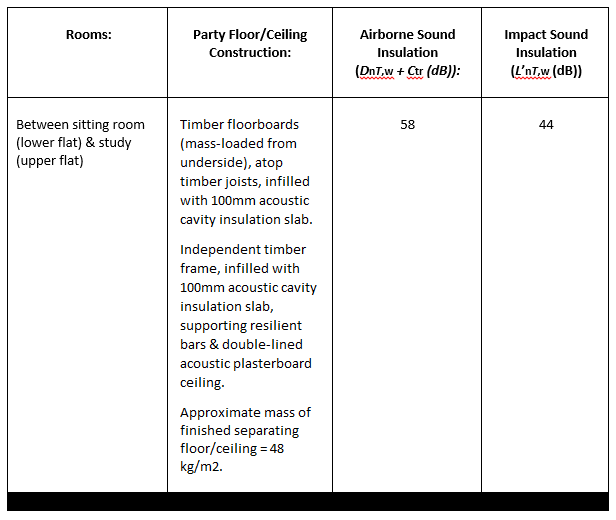BLOG 'A chronology of soundproofing systems London'
Very often, during the refurbishment of period properties, the traditional lath & plaster ceilings are stripped-out, sometimes, on the assumption that a dry lined ceiling (with the benefit of modern materials) will perform more efficiently, in terms of controlling airborne sound passage.
In fact, the opposite tends to be true; the overall mass of a lath & plaster ceiling typically exceeds that of a plasterboard ceiling, even when double-lined. Moreover, because construction rubble and waste was generally swept between the joists, atop the supporting laths, the ceiling’s mass was further increased (often way beyond its constituent parts).
The sample test data below, collated between two apartments, inside a typical period conversion in North West London (where mixed ceiling constructions were in place), illustrates the point:
Note: airborne sound insulation measurements were performed to BS EN ISO 140-4: 1998 and impact sound insulation measurements were performed to BS EN ISO 140-7: 1998.
In this instance, it was decided that the plasterboard ceiling should be replaced, to improve its airborne sound insulating performance, more in line with the adjacent lath & plaster ceilings.
Accordingly, an acoustic independent ceiling was specified and installed, which subsequently performed as follows:

 +44 (0) 20 3858 0833
+44 (0) 20 3858 0833 email
email























